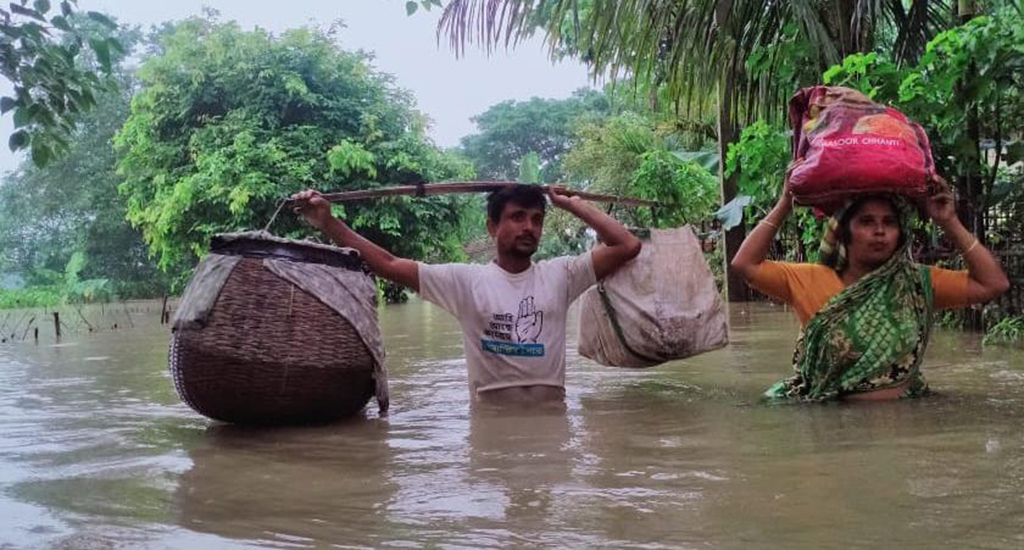
Floods in Assam fan out to new areas, cause more harm
While the intense rains and obstructions on river courses cause floods in Assam, the flood waters enter new territories, causing more damage than before.

While the intense rains and obstructions on river courses cause floods in Assam, the flood waters enter new territories, causing more damage than before.
Himashri Deka and her neighbour Mitali Deka shuddered to recall the moments when they hastily made a raft out of banana tree stems at night to save their baby daughters from drowning in the horrific floods in Assam last month.
The young mothers in their 20s reside at Milanpur hamlet in the Darrang district of Assam. The hamlet is located close to the banks of the river Saktola which is a tributary of the mighty Brahmaputra.
Water entered Milanpur on 16 June as it had been raining for a few days. But the villagers were unconcerned since water-logging is a regular phenomenon in Assam every year.
But this year it was different. By the evening of 20 June there was knee-deep water.
Some men had gone far to catch fish that had come in the flood waters. They were unaware that their village was marooning fast. Some had gone to perform the last rites of a villager who lost his life in the floods.
“It was pitch dark as the power connections were snapped due to the fear of electrocution. My four-month-old daughter and Mitali’s nine-month-old daughter were crying for hours,” said Himashri Deka.
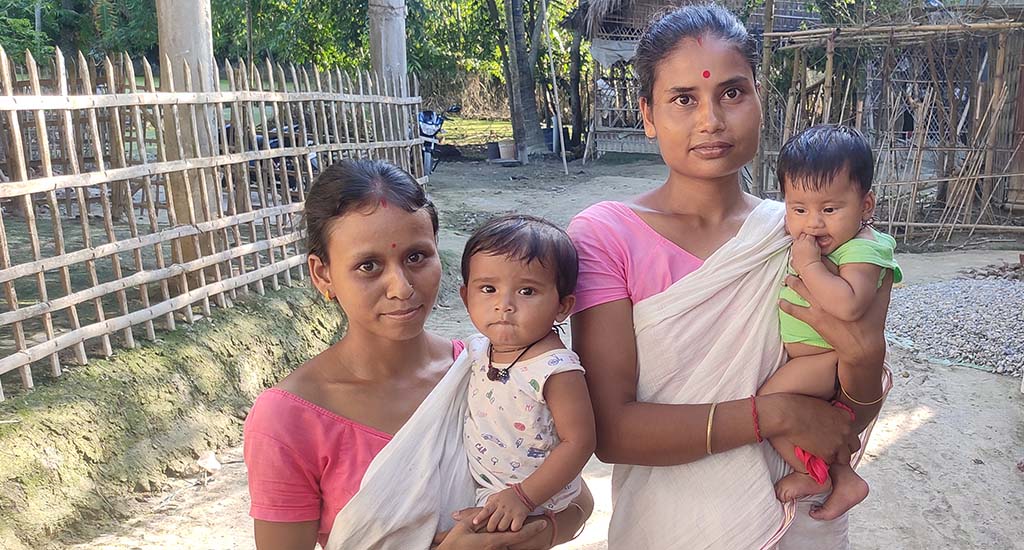
“We placed beds atop each other to save them but the water kept rising at tremendous speed.”
There was no way the young women could raise the beds anymore.
“So we chopped off the banana trees and made rafts as we had no other way to move out of our village. We took our daughters and rowed the raft and somehow managed to reach the relief camp around 1.5 kilometres away,” Himashri Deka recollected. “Our men joined us on the way.”
More than 120 villagers used 25 such rafts to rush out of the village that day to save themselves from the flood waters.
The heavy downpour since March caused the severe floods. The state received 672.1 mm of rain instead of an average of 414.6 mm between March and May – which was 62% above normal.
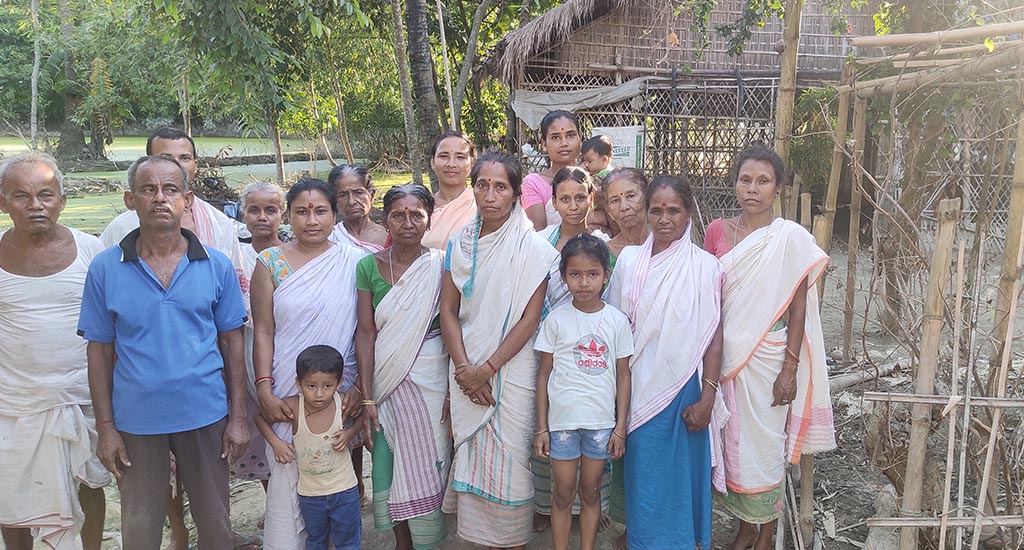
The state faced two severe waves of floods this year. The first was in May affecting parts of Barak Valley, Hojai and Dima Hasao districts. The second was in June that wreaked havoc mostly in lower Assam.
According to senior officials of the Assam State Disaster Management Authority (ASDMA), 192 people died in the floods while nearly one million people across 11 districts have been affected by the floods.
Barpeta, Bajali, Cachar, Chirang, Dibrugarh, Hailakandi, Kamrup, Karimganj, Morigaon, Nagaon, Sivasagar and Tamulpur are the districts that have been badly hit.
Apart from severe rains, experts blame man-made factors for the floods being more intense this year.
“Severe rains are one of the reasons for the floods as the state received heavy rainfall. But there are also man-made factors responsible for the floods,” Kamaruz Hoque, an environmentalist in Assam, told Village Square.
He said that breaches in mud embankments caused severe floods.
“The series of dam constructions in Bhutan blocks the natural flow of water. The severe rains left Bhutan with no option but to release the water. This led to embankment breaches and severe floods in many areas that had previously not been affected,” he said.
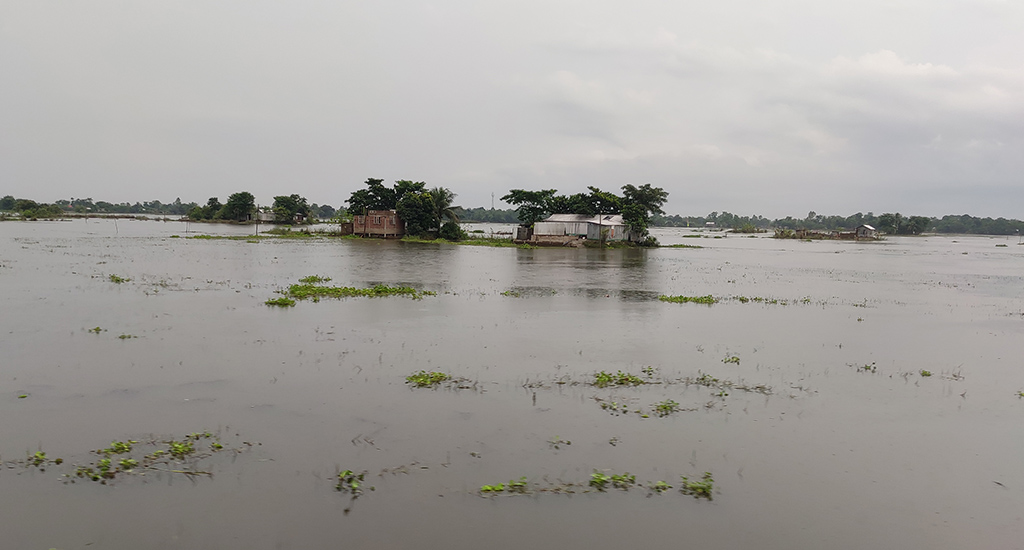
“There will be floods every year. But the loss can be minimised by allowing river water to flow freely without any obstructions like dams,” said Hoque.
Though the people of Milanpur blame themselves for staying put when the flood waters rose, they cannot be blamed. Because previously Milanpur had experienced water logging but not flooding that posed a risk to life.
Floods in Assam had almost a different character this year. The flood waters gained new territories and wreaked havoc in villages that mostly remained unharmed in nature’s fury earlier.
Government officials admit that they were taken aback by the ferociousness of the floods as the water entered new territories.
“The devastation was mind-numbing because the water sneaked into new areas where there were hardly any floods in previous years. It made our task difficult and took time to reach those areas and start rescue and relief operations,” said a senior government official requesting anonymity.
In addition to displacing millions of people, floods have also caused severe loss to agriculture.
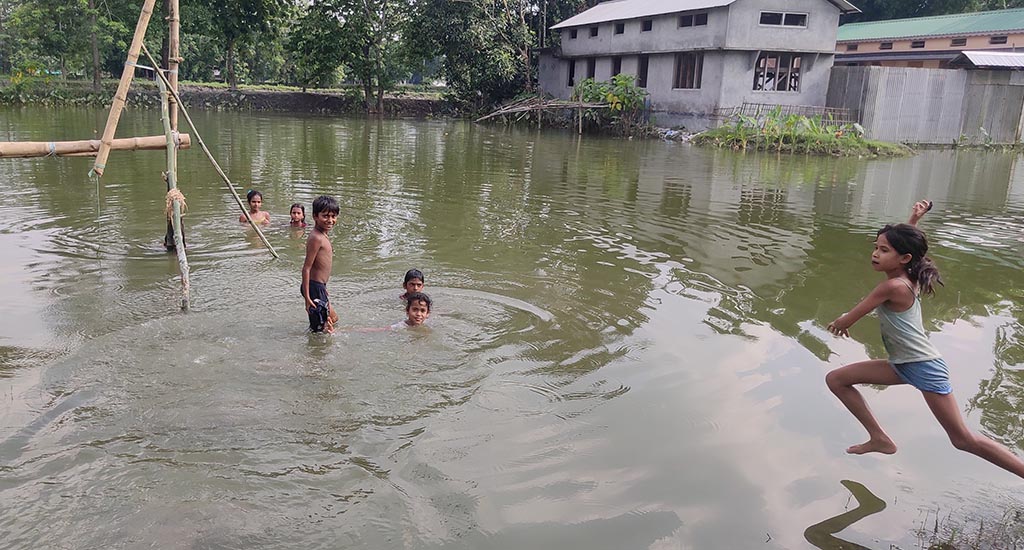
“Earlier estimates suggest that around one million farming families have been badly affected in the entire state. Crops in 2,57,772 hectares of land have been damaged,” Manab Jyoti Das, assistant agriculture information officer, told Village Square. “The summer paddy cultivated in 86,878 hectares of land was almost ready for harvesting but have been destroyed in the floods.”
Das believes that the losses could be more as several areas are still not accessible and it would take time to assess the damage.
“The state government has already distributed 40,000 quintals of seeds so that farmers can start cultivation afresh in 94,000 hectares of land,” said Das.
While the government is working to ensure villagers’ basic needs and resumption of their livelihoods, women are in a fix.
Social workers distributing relief material find a considerable demand for contraceptives after the floods.
“We started distributing dry ration among villagers as soon as the water level started to recede. We were surprised when women asked us for birth control pills and sanitary pads ,” said Nani Kumar Saikia, executive director of Satra, a non-profit organisation improving rural livelihoods in the Darrang district.
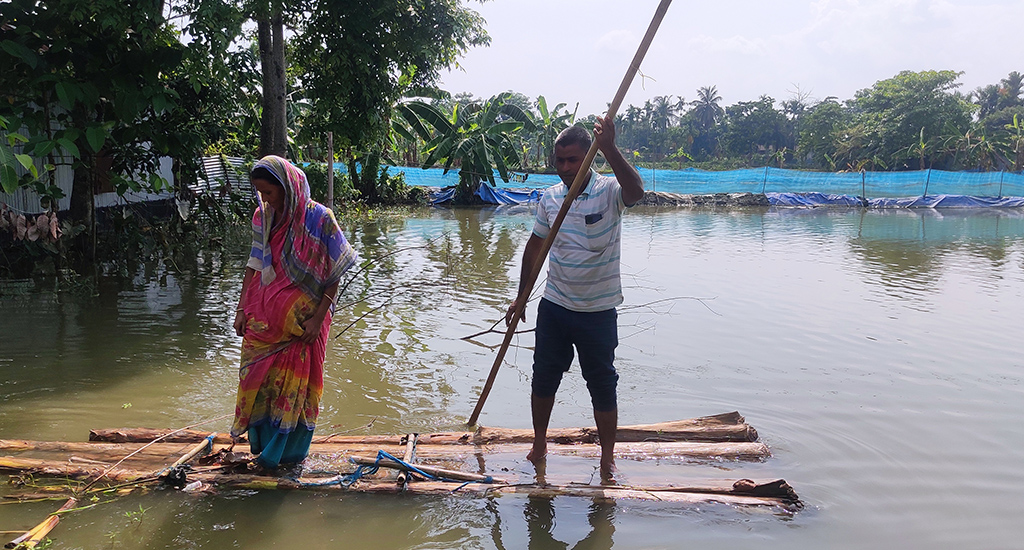
“They don’t want to become mothers in this situation when they’ve lost everything in the floods,” said Saikia.
Villagers in the affected areas complain of losing everything in the floods.
“We went to the relief camp on 16 June after the water level began to rise. We could hardly take anything with us. We have nothing left as all our savings have gone in the water. The flood has turned us paupers,” rued Tapasi Khatun, a homemaker of Datta Kuchi village in the Barpeta district.
The saving grace for many people like Khatun who are back from the relief camp is that some neighbours arrange for food and water.
Himashri Deka and Mitali Deka are also back home from the relief camp. Despite losing all their belongings to the floods they are happy. Having saved the lives of their baby daughters from the catastrophe, they find the loss of their belongings immaterial.
The lead image at the top of this page shows a couple going to a relief camp, wading through waist-deep water carrying the most valuable possessions (Photo courtesy Satra)
Gurvinder Singh is journalist based in Kolkata.